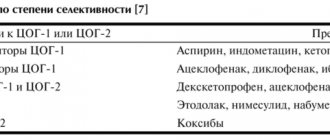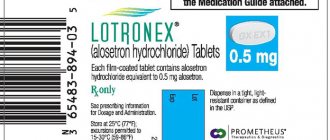Listenon solution for intravenous and intramuscular administration 20 mg/ml ampoules of 5 ml 5 pcs.
Immune system disorders. Frequent: allergic reactions (severe redness of the skin, urticaria). Rare: bronchospasm. Very rare: anaphylactic shock with sudden redness of the skin, with or without bronchospasm and decreased blood pressure. Disorders of the blood and lymphatic system. Very common: increased serum potassium concentration (most often a slight increase of 0.05 mmol/l). Myoglobinemia (found in 20% of children, less often in adults). This effect is independent of dose and can occur with or without muscle fasciculations. Very rare: ventricular fibrillation and cardiac arrest due to hyperkalemia. Metabolic and nutritional disorders. Very rare: life-threatening hyperkalemia, porphyria, malignant hyperthermia with or without muscle rigidity (spasm of the masticatory muscles), cardiovascular complications (tachyarrhythmias, unstable blood pressure), increased end-tidal CO2 concentration (during capnometry), increased body temperature, severe acidosis, hemoglobinuria. Violations of the organ of vision. Common: increased intraocular pressure. Disorders of the respiratory system, chest and mediastinal organs Rare: prolonged apnea in patients with impaired plasma cholinesterase activity, laryngospasm. Very rare: late respiratory failure due to disorders of neuromuscular transmission, laryngeal edema, pulmonary edema. Gastrointestinal disorders. Common: increased intragastric pressure (risk of regurgitation in pregnant patients, patients with hiatal hernia, atony of the stomach and intestines, ascites, and abdominal tumors), increased salivation. Musculoskeletal and connective tissue disorders. Very common: muscle fasciculations (90%), myalgia as a result of muscle fasciculations (approximately 60% of all patients), most often develops in the neck, shoulder girdle, chest and back, especially in middle-aged patients (20 to 50 years). Uncommon: Mild trismus (up to 60 seconds), which can be reduced with propofol or a small dose of a non-depolarizing muscle relaxant. Rare: muscle contractions instead of relaxation (often against the background of dystrophic myotonia or congenital myotonia). Prolonged paralysis as a result of the development of a double block and impaired neuromuscular transmission, which can also be a consequence of idiosyncrasy (hereditary cholinesterase variant), overdose or decreased plasma cholinesterase activity. Very rare: acute rhabdomyolysis with established and unidentified neuromuscular conduction disorders. Cardiovascular disorders. Very common: arrhythmias (found in 50% of children and 20% of adults after the first intravenous injection, most often in young children), mild bradycardia (especially in children, less often in adults). Frequent: increased or decreased blood pressure. Uncommon: tachycardia. Very rare: ventricular arrhythmias, ventricular fibrillation, cardiac arrest (due to hyperkalemia), hypercalcemia, especially in children with unspecified skeletal muscle diseases (Duchenne myopathy); heart failure as a result of anaphylactoid reactions. Disorders of the skin and subcutaneous tissues. Common: redness of the skin due to the release of histamine. Renal and urinary tract disorders. Rare: myoglobinuria and increased activity of creatine phosphokinase, mainly in children receiving Lystenon in combination with halothane. Very rare: myoglobinuria leading to renal failure, mainly in patients with diagnosed or hidden muscular dystrophy. Nervous system disorders. Common: increased intracranial pressure.
Listenon. Description, instructions.
28.02.2012 7977
Interventions requiring muscle relaxation (usually short-term): turning off spontaneous breathing (intratracheal intubation, bronchoscopy);
complete muscle relaxation (endoscopy, reduction of dislocations, reduction of fractures... International name:
Suxamethonium chloride)
Description of the active substance (INN):
Suxamethonium chloride
Dosage form:
solution for intravenous and intramuscular administration
Pharmachologic effect:
Short-acting depolarizing muscle relaxant. Causes a blockade of neuromuscular transmission. Interacting with n-cholinergic receptors, it causes depolarization of the end plate. The process spreads to the adjacent membranes, and a generalized disorganized contraction of myofibrils occurs (i.e., the development of blockade is preceded by muscle twitching - the result of short-term facilitation of neuromuscular transmission). The membranes, remaining depolarized, do not respond to additional impulses, since maintaining muscle tone requires the receipt of repeated impulses associated with repolarization of the end plate, spastic paralysis occurs. After IV administration, muscle relaxation occurs in the following sequence: muscles of the eyelids, chewing muscles, muscles of the fingers, eyes, limbs, neck, back and abdomen, vocal cords; then the intercostal muscles and the diaphragm. Increases cerebral blood flow and intracranial pressure under general anesthesia. After intramuscular administration, the effect develops within 2-4 minutes; after intravenous administration - after 54-60 s, after 2-3 minutes, muscle relaxation reaches a maximum and remains in full for 3 minutes. Duration of action - 5-10 minutes. The severity of the effect depends on the size of the administered dose: 0.1 mg/kg - relaxation of skeletal muscles without a significant effect on the respiratory system, 0.2-1 mg/kg - complete relaxation of the muscles of the abdominal wall and respiratory muscles (there is a significant limitation or complete stop of spontaneous breathing). For long-term muscle relaxation, repeated administration is necessary. The rapid onset of the effect and the subsequent rapid restoration of muscle tone allow you to create controlled and controlled muscle relaxation.
Indications:
Interventions requiring muscle relaxation (usually short-term): turning off spontaneous breathing (intratracheal intubation, bronchoscopy); complete muscle relaxation (endoscopy, reduction of dislocations, reduction of fractures, gynecological, thoracic, abdominal operations); prevention of seizures during electrical pulse therapy; strychnine poisoning, tetanus (symptomatic therapy).
Contraindications:
Hypersensitivity, malignant hyperthermia (including history), myasthenia gravis, congenital and dystrophic myotonia, Duchenne muscular dystrophy, closed-angle glaucoma, acute liver failure, pulmonary edema, penetrating eye injuries, bronchial asthma, hyperkalemia, infancy (up to 1 year ), pregnancy. With caution. Emergency surgery in patients with a “full stomach”, decreased serum cholinesterase activity (end-stage liver failure), anemia, cachexia, prolonged fasting, chronic infections, widespread burns, trauma, the postpartum period, tetanus, tuberculosis, malignant neoplasms, chronic renal failure, myxedema, collagen diseases, conditions after plasma transfusion, plasmapheresis, artificial circulation, acute or chronic intoxication with insecticides - cholinesterase inhibitors (if ingested) or anticholinesterase drugs (neostigmine, physostigmine, distigmine, phospholine), simultaneous use of drugs that compete with suxamethonium for cholinesterase (for example procaine IV).
Side effects:
Allergic reactions (anaphylactic shock, bronchospasm); hyperkalemia, decreased blood pressure, arrhythmias, bradycardia (more often in children, with repeated administration in children and adults), conduction disturbances, cardiogenic shock; increased intraocular pressure, hypersalivation, fever; myalgia (in the postoperative period); prolonged paralysis of the respiratory muscles (associated with a genetically determined disorder in the formation of serum cholinesterase); rarely - rhabdomyolysis with the development of myoglobinemia and myoglobinuria. Overdose. Symptoms: respiratory arrest. Treatment: mechanical ventilation, in case of a decrease in cholinesterase in the blood serum - fresh blood transfusion.
Directions for use and dosage:
IV (stream, drip), IM. Adults: IV slowly, stream or drip (for long-term drip infusion use a 0.1% solution). Depending on the clinical situation, when administered intravenously, a single dose varies from 0.1 to 1.5-2 mg/kg. IM - 3-4 mg/kg, but not more than 150 mg. IM is used in children in doses up to 2.5 mg/kg, but not more than 150 mg, IV - 1-2 mg/kg. For tracheal intubation - 0.2-0.8 mg/kg; for muscle relaxation and shutdown of spontaneous breathing - 0.2-1 mg/kg; for relaxation of skeletal muscles during reduction of dislocations and reposition of bone fragments during fractures - 0.1-0.2 mg/kg; for endoscopy and EEG - 0.2 mg/kg; to prevent complications during electrical pulse therapy (convulsions, separation of muscles and tendons) - 0.1-1 mg/kg IV and up to 2.5 mg/kg IM, but not more than 150 mg. For long-term muscle relaxation, 0.5-1 mg/kg can be administered fractionally, every 5-7 minutes, throughout the entire operation. Repeated doses last longer.
Special instructions:
Administration of 3-4 mg of d-tubocurarine or 10-15 mg of diplacin 1 minute before suxamethonium chloride almost completely prevents muscle twitching and subsequent myalgia. With an appropriate dose and repeated administration, it can be used for longer operations, however, for long-term muscle relaxation, non-depolarizing muscle relaxants are usually used, which are administered after preliminary tracheal intubation against the background of suxamethonium. They are used only in a specialized department with equipment for artificial ventilation of the lungs and personnel proficient in this equipment, and against the background of general anesthesia. To prevent severe bradycardia, increased bronchial secretion and other effects associated with the m-cholinergic effect, it is recommended to administer atropine before administering suxamethonium. For patients with renal failure (without signs of hyperkalemia and neuropathy), it is administered once in medium doses, but is not used for repeated administrations or in higher doses due to the risk of developing hyperkalemia. Prolonged muscle relaxation with possible apnea can be caused by several reasons: “atypical” serum cholinesterase, hereditary deficiency of serum cholinesterase or a temporary decrease in its concentration in severe liver diseases, severe anemia, after prolonged fasting, cachexia, dehydration, febrile states, after acute poisoning or chronic exposure to insecticides - cholinesterase inhibitors (if ingested) or anticholinesterase drugs (neostigmine, physostigmine, distigmine, phospholine), as well as with the simultaneous use of drugs that compete with suxamethonium for cholinesterase (for example, intravenous procaine). With prolonged administration in doses of 3-5 mg/kg, the so-called “double block” may develop - a prolonged curare-like effect, which can be eliminated by neostigmine.
Interaction:
Enhances the effects of cardiac glycosides. Reduces the effectiveness of antimyasthenic drugs. Pharmaceutically incompatible with donor blood (hydrolysis occurs), blood preservatives, serum preservatives, blood products, barbiturate solutions (precipitate is formed) and alkaline solutions. Compatible with 0.9% NaCl solution, Ringer's solution, 5% fructose solution and 6% dextran solution. Anticholinesterase drugs, procaine, procainamide, lidocaine, verapamil, beta-blockers, aminoglycoside antibiotics, amphotericin B, clindamycin, cyclopropane, propanidide, organophosphorus insecticides, Mg2+ and Li+ salts, quinidine, quinine, chloroquine, pancuronium, enhance and prolong muscle relaxant action. Compatible with other muscle relaxants and narcotic analgesics. Halogen-containing drugs for general anesthesia enhance, and sodium thiopental and atropine reduce the undesirable effect on the cardiovascular system. Drugs that have the potential ability to reduce the activity of blood cholinesterase (aprotinin, diphenhydramine, promethazine, estrogens, oxytocin, corticosteroids in high doses, oral contraceptives) enhance and prolong the muscle relaxant effect of suxamethonium.
Publications in the media
(Suxamethonii chloridum) INN
Synonyms. Ditilin, Listenone, Miorelaxin.
Composition and release form. 2% solution in ampoules of 5 or 10 ml.
Indications. Tracheal intubation, endoscopic procedures (broncho-, esophageal-, cystoscopy); short-term operations (suturing the abdominal wall, reducing dislocations, etc.), eliminating convulsions due to tetanus.
Pharmachologic effect. Suxamethonium's chemical structure is a double acetylcholine molecule. Like acetylcholine, it interacts with n-cholinergic receptors of the neuromuscular plate, causing its depolarization. Due to its greater affinity for n-cholinergic receptors and resistance to acetylcholinesterase, suxamethonium causes more persistent and prolonged depolarization than acetylcholine. This initially causes a transient muscle contracture (twitching), and then a disruption of the conduction of neuromuscular excitation and relaxation of the skeletal muscles. The drug may cause the release of histamine. Myorelaxation begins 30 seconds - 1 minute after intravenous administration, the peak effect is achieved after 1-2 minutes and lasts up to 10 minutes.
Pharmacokinetics. Suxamethonium does not bind to plasma proteins, is destroyed by pseudocholinesterase into choline and succinic acid, and is excreted by the kidneys (10% unchanged); does not have a cumulative effect.
Side effects. Respiratory depression, muscle pain, bradycardia, cardiac arrhythmias, increased intraocular pressure, rhabdomyolysis, myoglobinemia, myoglobinuria, salivation, hyperthermia.
Contraindications. Glaucoma, infancy, liver dysfunction, anemia, cachexia, pregnancy, malignant hyperthermia, hypersensitivity to the drug.
Adverse reactions when interacting with other drugs. Do not mix suxamethonium solutions with barbiturate solutions (a precipitate forms) or with blood (hydrolysis occurs). Drugs that disrupt neuromuscular transmission (aminoglycoside antibiotics, polymycoins, clindamycin, novocaine, etc.) enhance the neuromuscular blockade of suxamethonium. Inhalation anesthetics (fluorotane, methoxyflurane, etc.) can increase bradycardia and hyperthermia caused by suxamethonium. Acetylcholinesterase inhibitors reduce the activity of the pseudocholinesterase enzyme and increase the concentration of suxamethonium in the blood, increasing its toxicity. Prozerin and other anticholinesterase drugs are not antagonists with respect to the depolarizing effect of suxamethonium; on the contrary, by suppressing the activity of cholinesterase, they prolong and enhance its effect.
Information for the patient. Suxamethonium is administered intravenously at a dose of 1.5-2 mg/kg. For long-term relaxation of skeletal muscles, the drug is administered repeatedly. The drug can only be used in a hospital by qualified medical personnel. Self-administration of the drug by the patient is unacceptable.


